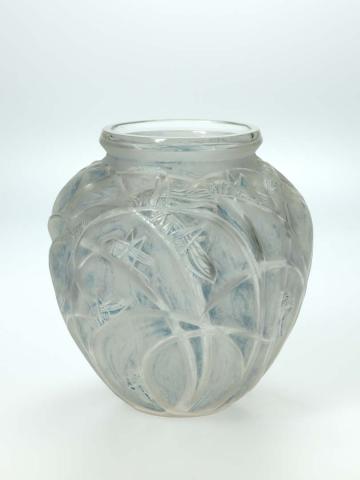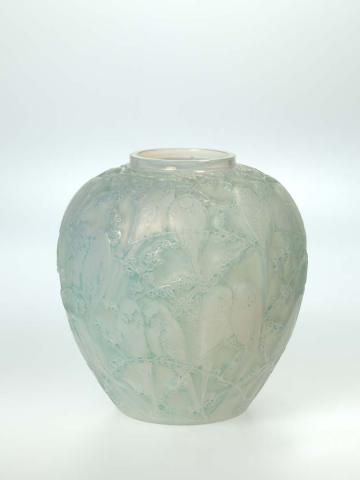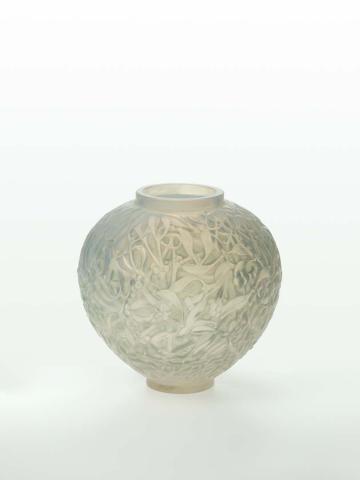René Lalique: Glass vases
By Ineke Dane Geraldine Kirrihi Barlow
International galleries February 2024
René Lalique was both an avant-garde craftsman and astute industrialist. Originally trained as a jeweller, he discovered glass in the 1890s as a new medium to enhance his intricate designs. Lalique’s opalescent and luminous creations were highly influential in the Art Nouveau and Art Deco movements.
Lalique turned his focus to glassmaking almost exclusively in 1922, opening a glassworks in north-east France that still operates today. The factory allowed Lalique to recast his designs in a variety of colours and finishes, from translucent clear or blue-green glass to red and frosted grey. By the end of the 1920s, it was an epicentre of French decorative art, combining luxury decor and mass production.
Like many artists of the early twentieth century, Lalique had a great interest in Japanese culture, which was a formative influence on Art Nouveau. He subtly decorated his glass objects with natural Japanese-inspired motifs such as grasshoppers, birds and bending reeds of grass. Notable in the group on display is the Perruches (Parakeet) vase, designed in 1919, which shows Australian budgerigars — a fashionable pet among the French elite at the time – perched on flowering branches in a compressed composition, resulting in a delicate, interlocking pattern. This exemplifies the influence of Japanese tradition, adjusted to European tastes.
Connected objects

Oval bowl c.1920s
- CRISTALLERIE LALIQUE ET CIE - Manufacturer
- LALIQUE, René - Designer

Vase: Malsherbe c.1923
- CRISTALLERIE LALIQUE ET CIE - Manufacturer
- LALIQUE, René - Designer

Druide vase designed 1924
- LALIQUE, René - Creator

Serpent vase c.1924
- LALIQUE, René - Creator

Beautreillis vase designed 1927
- LALIQUE, René - Creator

Oleron vase designed 1927
- LALIQUE, René - Creator

Vase: Ceylan c.1930
- CRISTALLERIE LALIQUE ET CIE - Manufacturer
- LALIQUE, René - Designer

Davos vase designed 1932
- LALIQUE, René - Creator

Vase: Biskra 1932
- CRISTALLERIE LALIQUE ET CIE - Manufacturer
- LALIQUE, René - Designer
Related artists
LALIQUE, René
1860
- 1945
Full profile
for LALIQUE, René
Metadata, copyright and sharing information
Parent story
This story is a sub-component of:
About this story
- Subject


